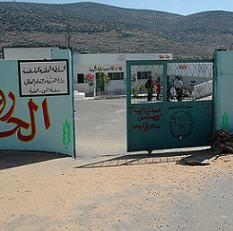
Area C Villages
You have reached ACRI’s archive, updated with our activity up until 2018. For more recent posts, please visit our current website here.
Under the Oslo Accords, the West Bank was divided into Areas A, B, and C. Area A includes all of the Palestinian cities, and the Palestinian Authority (PA) has responsibility for both civil and security matters; Area B includes most of the large Palestinian towns, and the PA has authority over civil matters only; in Area C, Israel has authority for both security and civil matters. Area C constitutes 60% of the West Bank, with 150,000 Palestinians living there.
Israel conducts two separate legal systems in the West Bank – one for Israelis and the other for Palestinians. One manifestation of this discriminatory legal regime is the two systems of planning that operate in the West Bank, which distinguish between inhabitants based on their nationality – one for the settlers, and a different one for Palestinians. Many Palestinian towns and villages in Area C are not recognized by Israel and have not benefited from even minimal town planning, even though many have been rooted in this land for generations.
Through public advocacy, litigation, and education, ACRI opposes the discriminatory practices utilized by the State within Area C. These include constant home demolitions, an inequitable distribution of resources and access to building permits and the legal division between civil and military authorities. ACRI seeks to promote the recognition of the villages currently unrecognized, and the inclusion of Area C inhabitants in planning sessions. As mandated by international humanitarian law, it is incumbent upon Israel – as an occupying power – not only to recognize the towns that existed in Area C prior to the occupation, but to afford the inhabitants the opportunity to plan and build to accommodate their natural increase, traditional lifestyle, and desire to improve their living conditions.
All
-
Water Provision and Drillings in the West Bank 2010-2016
June 5, 2018
The right to water is a basic human right, which greatly impacts a person’s quality of life. In the West … Read more
-
Knesset Round Up | June 3
June 3, 2018
Subscribe to our weekly Knesset update here: Registration Urban planning and building in the West Bank Strategic control of the … Read more
-
A new order could lead to the forced transfer of two Palestinian communities in the Jordan Valley
November 15, 2017
In an urgent letter sent to the Commander of the Central Command, Major General Roni Noma, the Association for Civil … Read more
-
Update on ACRI petition regarding Khirbat Zanuta
October 2, 2017
The High Court decided on 27.9.2017 to delete ACRI’s petition to stop demolitions of Palestinian residences in the village of Khirbat … Read more
-
Update on Petition regarding Firing Zone 918
January 12, 2017
The High Court of Justice issued an order nisi yesterday (11.1.2017) on a petition against the forced eviction of Palestinians … Read more





